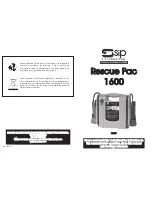
The serial interface
Interfacing the XMP 2600
The serial interface
The Serial Interface is RS232 hardware interface with three types of operating modes: Monitor
Mode, Remote Terminal Control Mode and Remote Computer Control Mode.
Pressing the terminal’s ENTER key while the Serial Interface is in
Monitor Mode and the GPIB Interface is OFF will cause the Serial
Interface to switch to the Remote Terminal Control Mode.
Serial
Interface
Capabilities
In addition to the Transmit and Receive lines, the interface implements the following
hardware handshake lines:
DTR - .................Data Terminal Ready.
CTS - .................Clear To Send.
RTS -..................Request To Send.
DCD - ................Data Carrier Detected.
The interface has the following programmable parameters:
Baud Rate - ........2400, 4800, 9600.
Xon/Xoff - .......Yes, No.
Stop Bits - .........1 or 2 depending on the Parity settings.
Parity - .............Odd, Even, None.
Echo - ...............Yes, No.
The number of Start Bits is fixed at 1.
The Serial Interface Parameters are set in the SERIAL SET-UP MODE (see: User’s
Guide).
The Serial Interface always uses “hardware handshake” (signals CTS and
RTS). If you do not wish to utilize those signals, short pins 7 and 8 of the
connecting cable, on the XMP’s side (see the User’s Guide for further
details).
Computer
Versus
Terminal
Operation
The selection of the ECHO parameter determines the Remote Control Mode of operation
by changing some aspects of the behavior of the Serial Interface, as detailed below:
echo
Yes (terminal)
No (computer)
echo
echo each received character
no echo
prompt
'>'
{ACK}
SRQ string
'{bell}SRQ<'
'SRQ<'
terminators
{CR} echoed as {CR}{LF}
{CR}{LF} or {LF}
In the Computer Remote Control mode of operation, the XMP 2600 will respond to each
command string with an ASCII {ACK} - 06 HEX.
2
XMP 2600 Programming Manual
rev. 1.1
















































